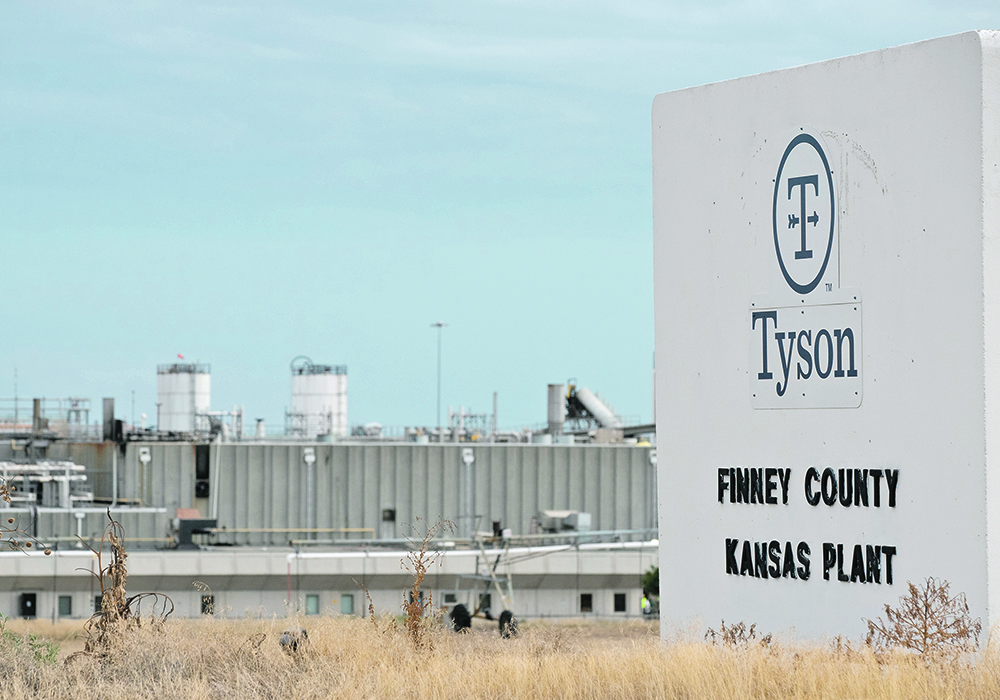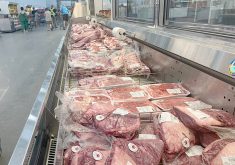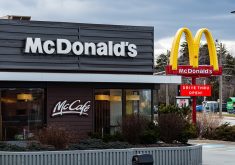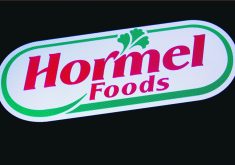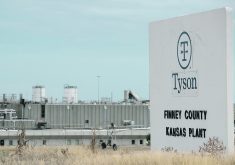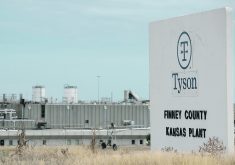For meat giant Tyson Foods, it could look like the pandemic never happened.
In fact, it’s like nothing has happened since 2017, at least in terms of its current share price, which is right back where it began before a tumultuous time in the meat production, slaughter, processing and marketing industry took it from below $50 per share through repeated spikes that tickled the $95 mark. On May 11 it was back below $50.
A recent slump in earnings, leading to a small second quarter loss, caused the company’s shares to slump almost 20 percent in a couple of days, following a year of tailing down from $90. The company’s share price has reflected the outlook for the American economy since 2019, when it soared as the United States experienced strong growth, collapsed when the pandemic hit, then steadily grew and recovered as the U.S. economy stabilized and then began grinding steadily lower as inflation and labour shortages chewed into its ability to earn margins.
“This quarter was definitely a tough one,” said chief executive officer Donnie King when the results were released.
Beef, pork and chicken production costs have surged. Slaughter costs have increased. Consumers are reducing purchases of expensive cuts of meat.
Product price increases have failed to cover all the cost increases, leaving Tyson at an operating loss of US$49 million for the quarter, compared to a profit of $1.2 billion last year in the same quarter. For the first half of the 2023 financial year Tyson had made $418 million, compared to $2.6 billion for the same period last year. Sales were up 1.3 percent for the six months, but operating income was down 84 percent, revealing the cost squeeze.
“While the current protein market is challenging, we have a strong growth strategy in place and are bullish on our long-term outlook,” said King.
Few industries have been as immediately and violently affected by the social and economic conditions of the past five years as meat production and processing:
- Strong economic growth from 2017-20 led to booming meat demand.
- The pandemic led to multiple plant shutdowns and massive disruptions in the restaurant and grocery store sectors.
- COVID controls led to higher production and labour costs.
- Economic recovery and lessening pandemic restrictions led to increased consumer spending and a return to restaurants and hotels.
- Widespread labour shortages caused production rates to struggle and costs to rise.
- Inflation caused millions of consumers to cut back on meat consumption and switch to cheaper proteins.
During the same period, the plant protein boom occurred, knocking confidence in the future of meat production and consumer demand but also providing the big protein providers such as Tyson with new opportunities and investments.

Like many food processors and meat companies, Tyson has struggled to keep up with the challenges, but has embraced cost cutting and automation as a means of shoring up weakening profitability.
“Beginning in fiscal 2022, we launched a new productivity program, which is designed to drive a better, faster and more agile organization,” said the company.
Already, it says, more than $1 billion in “productivity savings” has been achieved compared to 2021.
Tyson is a vertically integrated company, but cost increases have hit every step on the ladder. For 2023, the company expects to just break even on beef, chicken and pork production, while making an operating profit of eight to 10 percent on prepared food product production.


